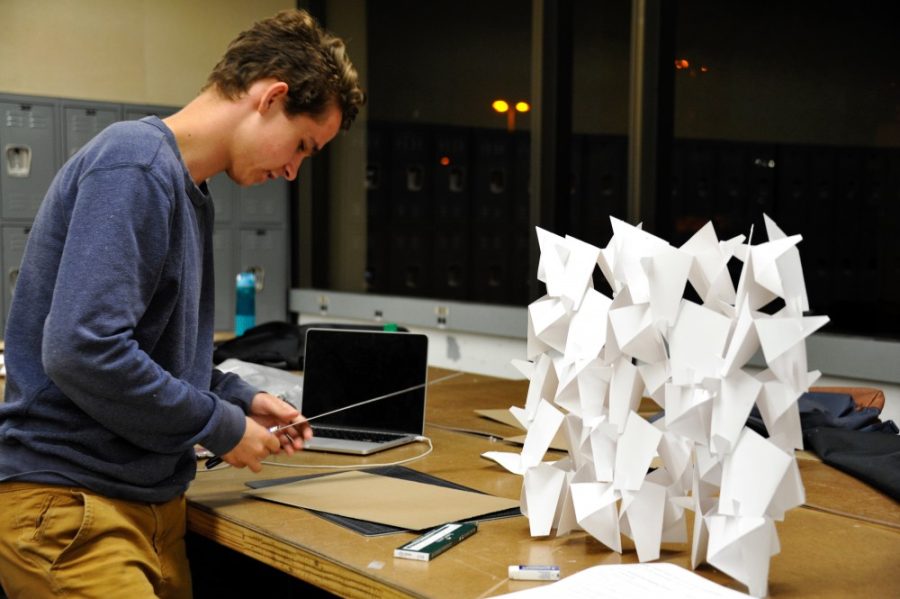The UA School of Architecture in the College of Architecture, Planning and Landscape Architecture received accreditation for eight years from the National Architectural Accrediting Board for both the school’s Bachelor of Architecture and Master’s of Architecture degrees.
This is the highest level of accreditation available by the accrediting organization. The Bachelor’s program has been accredited since 1964 and the Master’s program was granted its initial candidacy in 2011, according to the NAAB website.
The school also met some of the 26 student performance criteria set by the NAAB with distinction, with the Bachelor’s degree achieving distinction in 46 percent of the criteria and the Master’s degree achieving 19 percent, according to Robert Miller, director of the school of architecture.
Meeting a standard with distinction sets a “national standard of excellence,” Miller said.
This accreditation did not come without effort. The NAAB’s criteria covers what needs to be included in classes and syllabuses, what professors need to teach the students and what students have to learn. These objectives need to be documented, according to CAPLA lecturer Ray Barnes, who was also the archivist for the school’s accreditation.
RELATED: Mary Hardin named interim dean of CAPLA
Each semester, CAPLA and the faculty had to collect students’ projects and models to be archived. The NAAB required at least two years worth of archived materials for accreditation. The UA School of Architecture archived materials for over three years to be more prepared before the accreditation this year, Miller said.
The archived material, which filled three storage rooms, required an “incredible amount of participating by all the faculty,” according to Barnes.
Miller said the national accreditation board reviewed the report in the summer, and the school of architecture learned of its accreditation in July.
Second-year architecture student Raymie Rash said he wasn’t surprised by the school achieving the highest level of accreditation with the NAAB.
Rash said when looking for a school to study architecture, he saw that the UA School of Architecture consistently made it into lists of top-20 schools for its program, sometimes excluding specialty schools.
“I think that reflects really great on the school,” he said.
The school had previously received accreditation for its master’s program for two years and its Bachelor’s program for six years. This was the maximum term available by the NAAB before the accrediting system was changed a few years ago when the maximum term was changed from six years to eight years, according to CAPLA senior lecturer Brad Lang, who also served on the school committee preparing for accreditation.
The school will not have to be up for accreditation for eight years. Miller called this time a “really fun period” as compared to years before where preparation for the accreditation visit kicks into high gear.
During the years before an accreditation visit, the school doesn’t want to change many things and instead concentrates on the quality of teaching, Miller said.
“Everyone is really excited about the time that we have been given to improve the school, improve the curriculum and the freedom it’s given us to explore a variety of things within those realms,” Miller said.
Part of this exploration includes faculty sessions to discuss what things could be changed to “innovate this education,” Miller said. He also said one possible change could be the compression of the requirements for the master’s degree.
“There’s a consensus among the faculty that they’re so busy working that they don’t have enough time to really think and explore,” Miller said.
RELATED: UA Architecture: Then and now
When it comes to students at the school, he said that there is a sense of partnership between them and the faculty.
“Within our school, you can feel when we had the exhibit up, you could feel a lot of pride in the work,” Miller said. “There’s this kind of feeling like we’re doing a good job, we’re doing this together as one big family.”
Follow Ava Garcia on Twitter.









